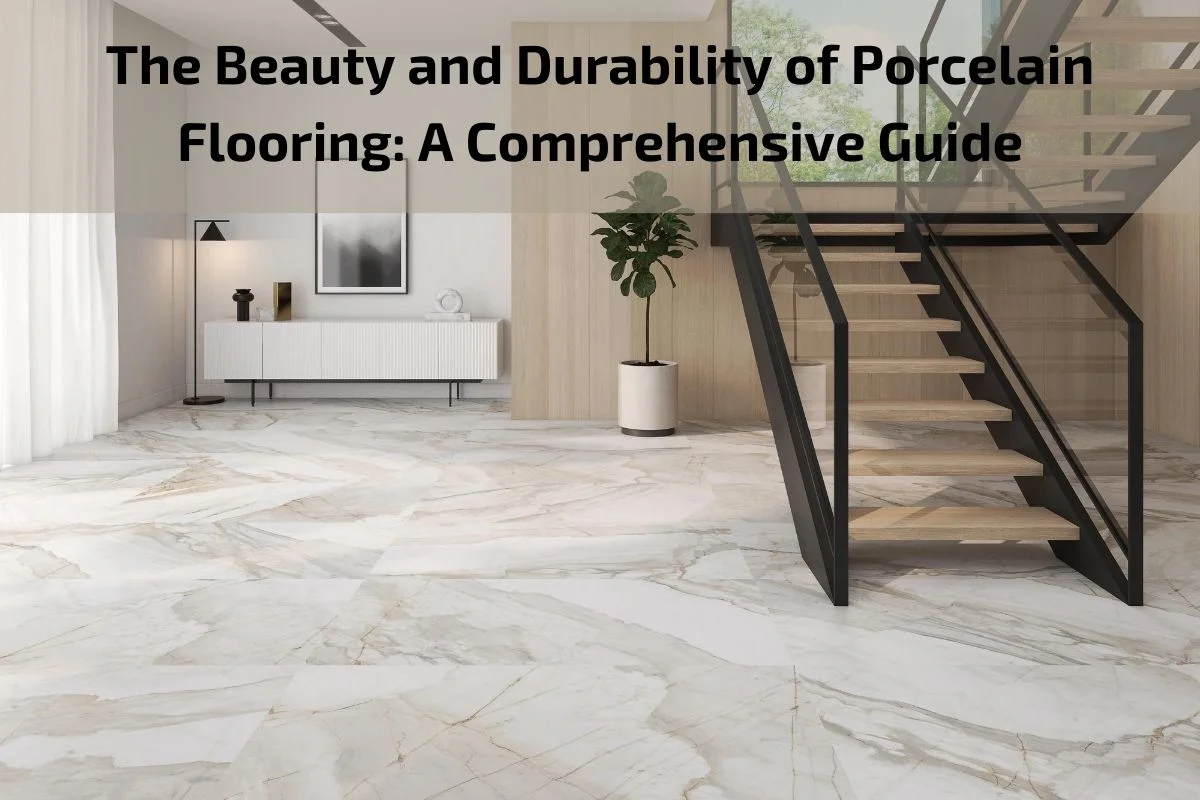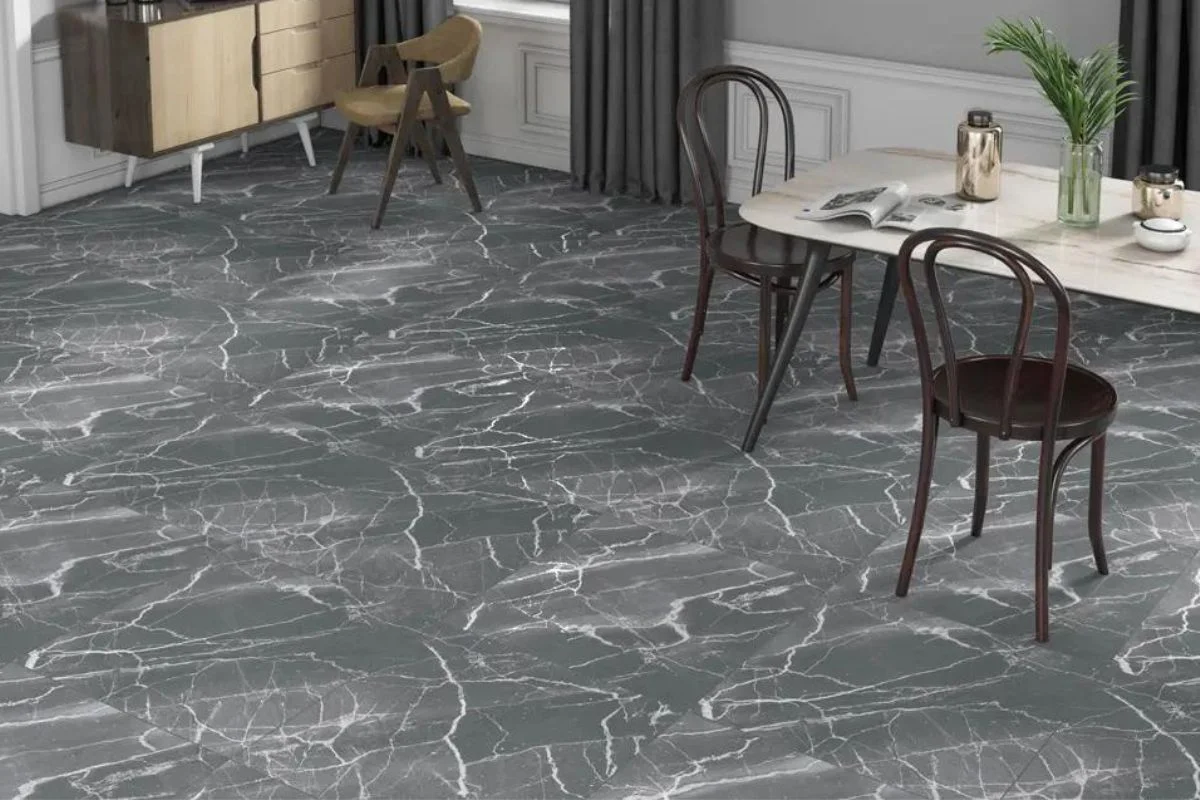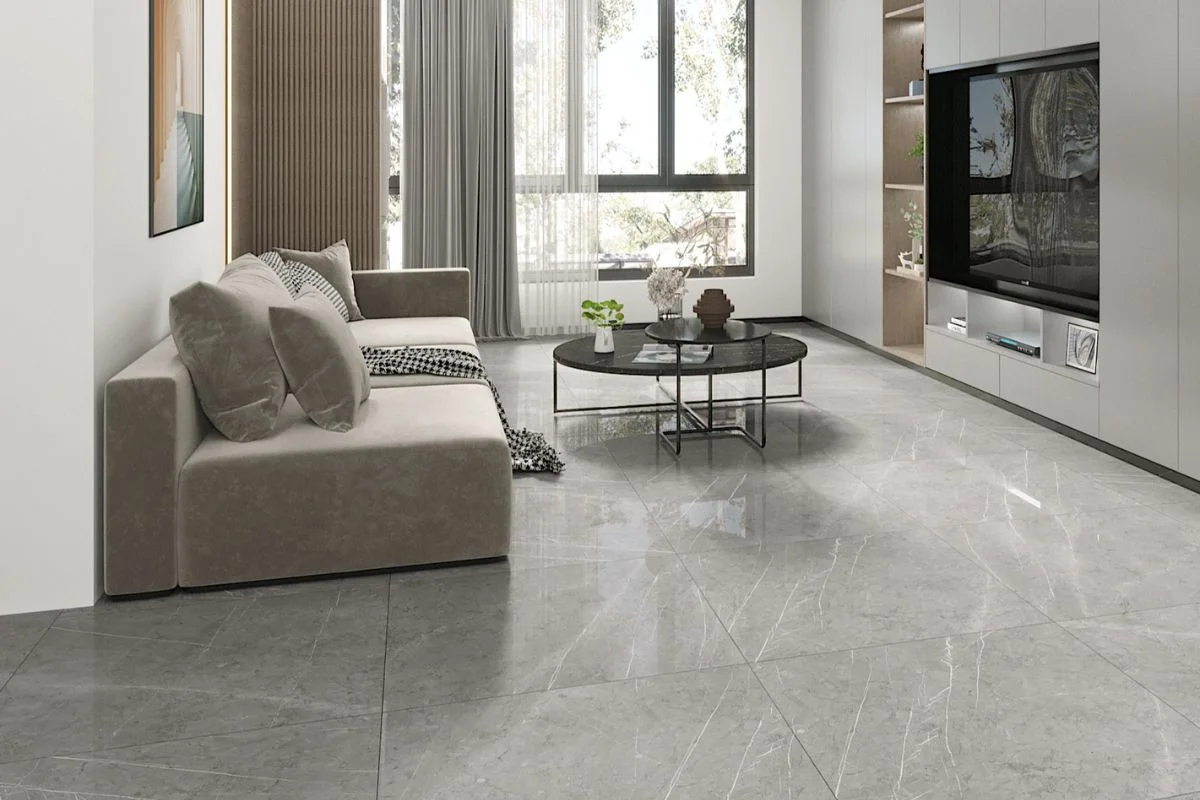
Porcelain flooring stands as a testament to the marriage of beauty and durability in the realm of interior design. Renowned for its elegance, versatility, and resilience, porcelain flooring has become a staple choice for homeowners, designers, and architects alike.
In this comprehensive guide, we embark on a journey to explore the allure and functionality of porcelain flooring. From its origins to its modern-day applications, we delve into the intricate details that make porcelain a preferred option for flooring solutions across the globe.
Porcelain’s allure lies not only in its aesthetic appeal but also in its exceptional durability. It withstands the test of time, offering a reliable foundation for both residential and commercial spaces. Whether adorning the floors of a contemporary kitchen or gracing the hallways of a bustling office, porcelain flooring exudes a timeless charm that elevates any environment.
Join us as we uncover the beauty and durability of porcelain flooring, unraveling its many facets and providing insights to help you make informed decisions for your next flooring project. From design inspiration to practical considerations, let porcelain flooring become the cornerstone of your interior design journey.
Brief Overview of Porcelain Flooring
Porcelain flooring represents a sophisticated and durable option for both residential and commercial spaces. Porcelain tiles are crafted from dense clay fired at high temperatures, resulting in a material that is remarkably sturdy and resistant to wear and tear.
One of the defining characteristics of porcelain flooring is its versatility. Available in a wide array of sizes, shapes, colors, and patterns, porcelain tiles offer endless design possibilities. From sleek modern aesthetics to timeless traditional styles, porcelain flooring can complement any interior decor scheme with ease.
Beyond its aesthetic appeal, porcelain flooring is celebrated for its exceptional durability and longevity. Its dense composition makes it highly resistant to scratches, stains, moisture, and heavy foot traffic, making it suitable for high-traffic areas such as kitchens, bathrooms, and entryways.
Moreover, porcelain flooring requires minimal maintenance, as its non-porous surface is easy to clean and disinfect. With routine sweeping and occasional mopping, porcelain tiles can maintain their luster and beauty for years to come.
In summary, porcelain flooring stands as a durable, versatile, and low-maintenance option for discerning homeowners and designers seeking both style and functionality. Its timeless elegance and practicality make it a preferred choice for a wide range of interior spaces, ensuring enduring beauty and performance for generations to come.
What is Porcelain Flooring?
Porcelain flooring is a type of ceramic tile that is manufactured from dense clay and other minerals. It is fired at extremely high temperatures, resulting in a durable and dense material that is highly resistant to water, stains, scratches, and wear.
One of the distinguishing features of porcelain flooring is its composition. Porcelain tiles are made from a refined clay mixture that is compressed under high pressure and then fired in kilns at temperatures exceeding 1,200 degrees Celsius (2,200 degrees Fahrenheit). This process creates a dense and non-porous material that is less absorbent than standard ceramic tiles.
Porcelain flooring is available in a wide range of sizes, shapes, colors, and patterns, allowing for versatile design options. It can mimic the look of natural stone, hardwood, marble, and other materials, offering endless possibilities for creating unique and visually appealing spaces.
Porcelain flooring is suitable for both indoor and outdoor use due to its durability and resistance to environmental elements. It is commonly used in kitchens, bathrooms, entryways, living rooms, and outdoor patios, as well as in commercial settings such as hotels, restaurants, and retail spaces.
In summary, porcelain flooring is a versatile and durable option that combines aesthetic appeal with practicality. Its strength, versatility, and low maintenance requirements make it a popular choice for homeowners and designers seeking high-quality flooring solutions for a variety of interior and exterior applications.

Definition and composition of Porcelain Flooring
Porcelain flooring is a type of ceramic tile renowned for its durability, versatility, and aesthetic appeal. It is manufactured from a specific blend of refined clay, minerals, and other natural materials, which undergoes a meticulous production process to create tiles that are dense, non-porous, and resistant to various environmental factors.
The composition of porcelain flooring typically includes finely ground clay, silica, feldspar, and other minerals, mixed together to form a homogeneous mixture. This mixture is then pressed under high pressure and fired at extremely high temperatures, usually exceeding 1,200 degrees Celsius (2,200 degrees Fahrenheit), in kilns.
During the firing process, the clay particles fuse together, creating a dense and compact structure that gives porcelain tiles their characteristic strength and durability. This dense composition also makes porcelain flooring highly resistant to moisture absorption, stains, scratches, and wear, making it suitable for both indoor and outdoor applications.
Porcelain flooring is available in a variety of sizes, shapes, colors, and finishes, allowing for endless design possibilities. It can mimic the look of natural stone, wood, marble, concrete, and other materials, offering versatility and flexibility in interior and exterior design projects.
In summary, porcelain flooring is defined by its unique composition and manufacturing process, which results in tiles that are exceptionally durable, versatile, and aesthetically pleasing. Its strength, resistance to wear, and low maintenance requirements make it a popular choice for a wide range of residential and commercial applications.
Advantages and Disadvantages of Porcelain Flooring
Porcelain flooring offers a host of advantages along with some considerations to keep in mind. Understanding both the benefits and potential drawbacks can help you make informed decisions when choosing flooring for your space.
Advantages:
Exceptional Durability: Porcelain flooring is highly durable and resistant to scratches, stains, moisture, and wear. It is ideal for high-traffic areas and can withstand heavy use without showing signs of damage.
Versatility in Design: Porcelain tiles come in a wide range of colors, patterns, sizes, and finishes, allowing for endless design possibilities. They can mimic the look of natural materials such as wood, stone, marble, and concrete, offering versatility in interior and exterior design projects.
Low Maintenance: Porcelain flooring is easy to clean and maintain. It requires regular sweeping and occasional mopping with a mild detergent to keep it looking fresh and new. Unlike natural materials, porcelain does not require sealing or special treatments.
Moisture Resistance: Porcelain tiles are non-porous and highly resistant to moisture absorption, making them suitable for areas prone to spills, moisture, and humidity, such as kitchens, bathrooms, and outdoor spaces.
Longevity: Due to its durable nature and resistance to wear, porcelain flooring can last for decades with proper care and maintenance, making it a long-term investment for your home or business.
Disadvantages:
Hardness: The hardness of porcelain tiles can make them less comfortable to stand on for long periods, especially in areas where people may spend a lot of time standing, such as kitchens or laundry rooms.
Installation Complexity: Installing porcelain flooring can be more challenging and time-consuming compared to other flooring materials. It requires proper subfloor preparation, precise cutting, and careful handling to achieve optimal results.
Cost: Porcelain flooring can be more expensive upfront compared to other flooring options such as vinyl or laminate. However, its durability and longevity often justify the initial investment over time.
Susceptibility to Chips and Cracks: While porcelain is highly durable, it can still be susceptible to chips and cracks, particularly in areas where heavy objects are dropped or where there is significant impact.
Coldness: Porcelain flooring can feel cold to the touch, especially in colder climates or during the winter months. Using area rugs or installing radiant heating systems can help mitigate this issue.
Installation Process Porcelain Flooring
Installing porcelain flooring requires careful planning, preparation, and attention to detail to achieve professional results. Here’s a step-by-step guide to the installation process:
Subfloor Preparation:
Ensure that the subfloor is clean, dry, level, and free of any debris, dust, or grease.
Repair any cracks, uneven areas, or imperfections in the subfloor using appropriate patching compounds or leveling materials.
Allow the subfloor to acclimate to the surrounding environment for at least 24 hours before beginning installation.
Layout and Planning:
Determine the layout of the porcelain tiles, considering factors such as room dimensions, pattern alignment, and tile orientation.
Dry lay the tiles on the floor to visualize the layout and make any necessary adjustments before applying adhesive.
Cutting and Trimming:
Use a tile cutter or wet saw to cut porcelain tiles to the desired size and shape, taking into account any irregularities in the layout or obstacles such as doorways and corners.
Ensure that the edges of the cut tiles are smooth and free of jagged edges to achieve a clean and professional finish.
Mixing Adhesive:
Prepare the tile adhesive according to the manufacturer’s instructions, ensuring proper consistency and mixing ratios.
Use a notched trowel to apply a thin, even layer of adhesive to the subfloor, working in small sections to prevent the adhesive from drying out too quickly.
Tile Installation:
Begin laying the porcelain tiles in the predetermined pattern, starting from the center of the room and working outward.
Press each tile firmly into the adhesive, using tile spacers to maintain consistent grout lines and ensure proper alignment.
Use a level to check that the tiles are flat and even, making any adjustments as needed to maintain a uniform surface.
Grouting:
Allow the adhesive to cure according to the manufacturer’s recommendations before grouting.
Mix the grout to the desired consistency and apply it evenly between the tiles, using a grout float to press the grout into the joints.
Remove excess grout from the surface of the tiles using a damp sponge, being careful not to disturb the grout lines.
Sealing:
Allow the grout to cure for the specified time before applying a grout sealer to protect against stains and moisture penetration.
Apply a tile sealer to the surface of the porcelain tiles to enhance their durability and resistance to stains and scratches.
Finishing Touches:
Install transition strips or molding around the perimeter of the room to provide a finished look and protect the edges of the flooring.
Clean the surface of the tiles with a damp cloth to remove any remaining grout residue or adhesive marks.
Allowance for Curing:
Allow the installed porcelain flooring to cure fully before allowing foot traffic or placing heavy objects on the surface, as per the manufacturer’s recommendations.

Maintenance and Care Porcelain Flooring
Proper maintenance and care are essential to preserve the beauty and longevity of porcelain flooring. By following these guidelines, you can keep your porcelain tiles looking pristine for years to come:
Regular Cleaning:
Sweep or vacuum the porcelain flooring regularly to remove dirt, dust, and debris that can accumulate on the surface.
Use a soft-bristled broom or vacuum cleaner with a brush attachment to avoid scratching the tiles.
Mopping:
Mop the porcelain tiles with a mild detergent or pH-neutral cleaner diluted in warm water.
Avoid using harsh chemicals, abrasive cleaners, or vinegar-based solutions, as they can damage the grout and dull the surface of the tiles.
Grout Cleaning:
Clean the grout lines between the tiles using a grout brush or a soft-bristled toothbrush dipped in a mixture of warm water and mild detergent.
For stubborn stains or discoloration, use a grout cleaner specifically formulated for porcelain tiles, following the manufacturer’s instructions carefully.
Stain Removal:
Promptly wipe up spills and stains on the porcelain flooring to prevent them from penetrating the surface and causing permanent damage.
For tough stains such as grease, oil, or ink, use a specialized porcelain tile cleaner or a poultice made from baking soda and water.
Avoid Abrasive Materials:
Avoid using abrasive cleaning pads, steel wool, or scouring powders on porcelain tiles, as they can scratch and dull the surface.
Use soft, non-abrasive cleaning tools and materials to protect the integrity of the tiles and grout.
Sealant Application:
Consider applying a penetrating sealer to the grout lines between the porcelain tiles to help repel stains and moisture and prevent discoloration.
Follow the manufacturer’s instructions for proper application and reapplication of the sealant as needed.
Protection from Furniture:
Place felt pads or furniture glides under the legs of heavy furniture to prevent scratching and indentation of the porcelain tiles.
Avoid dragging or sliding heavy objects directly on the floor to minimize damage.
Regular Maintenance:
Periodically inspect the porcelain flooring for signs of wear, damage, or grout deterioration, and address any issues promptly to prevent further damage.
Consider hiring a professional tile and grout cleaning service for deep cleaning and maintenance, especially in high-traffic areas or if the tiles have stubborn stains or buildup.
conclusion
In conclusion, porcelain flooring stands as a testament to both beauty and practicality in the realm of interior design. With its durability, versatility, and aesthetic appeal, porcelain tiles have become a popular choice for homeowners, designers, and architects alike.



